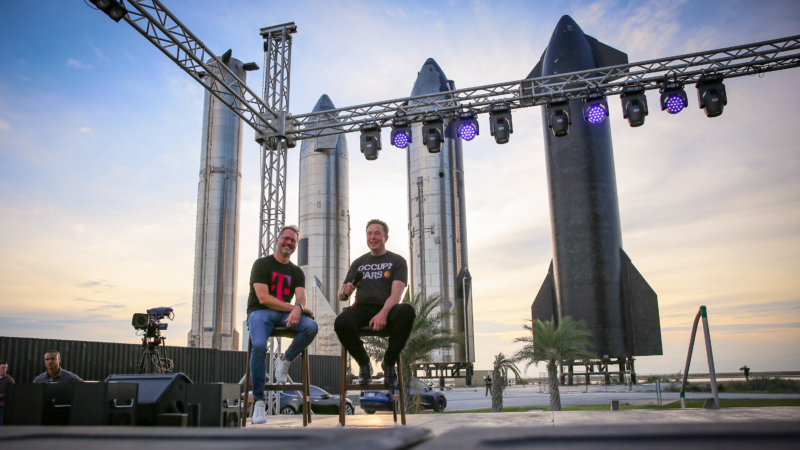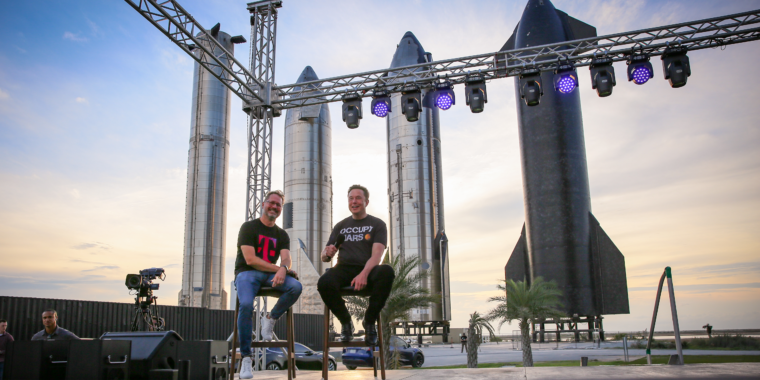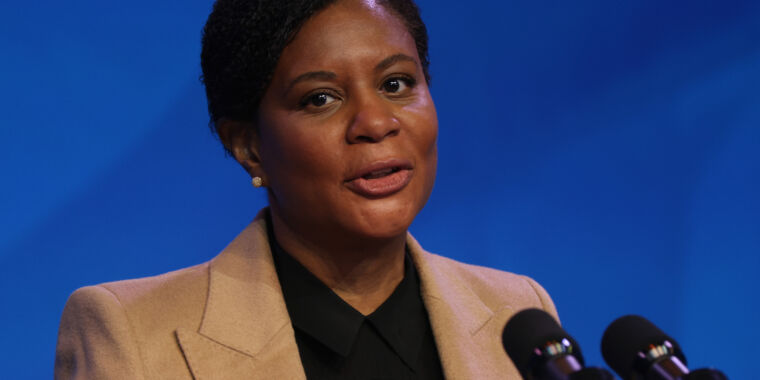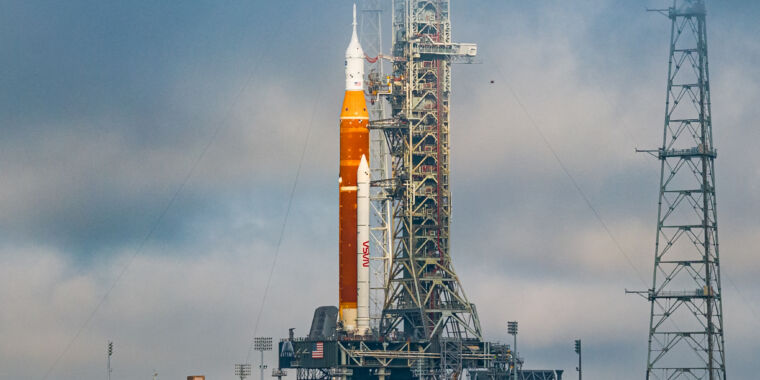
BOCA CHICA, Texas—SpaceX and T-Mobile announced an ambitious plan on Thursday evening to provide ubiquitous connectivity to anyone with a cell phone from space.
The project would pair SpaceX’s Starlink satellite technology with the second largest wireless carrier in the United States, T-Mobile US, and its mid-band spectrum, mobile network, and large customer base.
Delivering space-to-ground internet to mobile phones will require SpaceX to finalize development of its second generation of Starlink satellites. These will be significantly larger than the current ones, which have a mass of about 295 kg. SpaceX founder and chief engineer Elon Musk said project could enter “beta service” before the end of 2023.
During a live event at SpaceX’s Starbase facility in South Texas, where the company is building and testing its next generation Starship rocket, Musk appeared alongside T-Mobile US chief executive Mike Sievert. The event had something of a rocket concert flair, with a smoke machine, fireworks, and plenty of people mingling around the stage in black t-shirts. Only these shirts bore magenta T-Mobile and white SpaceX logos, and three Starship prototypes loomed in the background.
The companies are proposing to deliver a service dreamed about since the advent of mobile telephones—no dead zones. “Our vision is, if you have a clear view of the sky you’re connected,” Sievert said.
How this would work
Presently, a user of SpaceX’s Starlink service needs to have a dish-shaped terminal that can pull down broadband internet from one of the 2,800 Starlink satellites in low-Earth orbit. The existing satellites are just not powerful enough to connect to much smaller mobile phones as the signal is too weak.
The solution to this problem is using a much more powerful phased array antenna on the second version, or V2, of the Starlink satellites. Musk said the body of these satellites would be about 7 meters long, and the antenna would fold out to be about 5 meters on a side, or “roughly 25 square meters.” As the satellite passes overhead, this antenna will send and receive data along a focused beam passing across the planet’s surface.
Initially, at least, the service would not provide broadband internet service. But in a typical cell of service, it should provide up to 2 to 4 megabits of data, enough for thousands of voice calls or millions of text messages. This would allow connectivity in areas off the grid, or during emergency situations such as when a hurricane knocks out service to a community.
A user’s cell phone would look for service first from a cell phone tower, but when it did not detect this, instead of providing a user with no bars of service the phone would search the sky. It would then draw connectivity from the nearest available satellite, with software on the satellite communicating to the mobile phone as if it were a virtual cell tower on the ground.
Sievert said T-Mobile planned to offer this service to its users on most of its existing plans for free, initially covering the United States, including Alaska and Hawaii, as well as much of the world’s oceans. He invited foreign mobile network operators to partner with T-Mobile and SpaceX, and offer reciprocal roaming around the world.
The challenges
Beyond regulatory issues, SpaceX faces several major challenges to make this all work. Principal among them is designing and building the large satellites capable of talking to mobile phones.
“These are the most advanced antennas in the world, we think,” Musk said. “They have to pick up a very quiet signal from your cell phone. Just imagine, that signal has to travel 500 miles, and then be caught by a satellite that’s traveling at 17,000 mph. The satellite’s got to compensate for the Doppler effect of moving so fast.”
Then they have to get the satellites into space. The V2 satellites are too large for company’s Falcon 9 rocket’s payload fairing, which is 5 meters across. So the full-size Starlink V2 satellites will need to wait for the much larger Starship rocket to come online. SpaceX is working toward doing just that at the Starbase facility in South Texas, but operational launches are likely at least a year away.
To that end, if Starship development does not come as soon as expected, Musk said SpaceX may develop a “V2 mini” Starlink satellite that could fit within the Falcon 9 rocket’s payload fairing. But it seems clear that bringing the kind of global connectivity Musk and Sievert spoke about will require a fully operational Starship launch system.
In his comments on Thursday night, Musk acknowledged that the company has a lot of technical work to do, but he said the SpaceX teams have made great progress.
“So it’s really quite a difficult technical challenge,” he said. “But we have it working in the lab and we’re confident this will work in the field. So it’s actually quite a lot of extra hardware on the satellites and it’s also a lot of software. It’s a hard problem.”
The competition
SpaceX has already launched satellites for one competitor in this area, Lynk, and is due to launch the “BlueWalker 3” demonstration satellite for another company AST Space Mobile, later this year. Both of these companies are attempting to deliver direct-to-cellphone service.
Lynk says it has already successfully demonstrated the ability to use ordinary, unmodified mobile telephones to connect to satellite Internet services. The company presently has one operational satellite in space, but is planning to launch more, to provide a wider area of coverage.
“Elon said it’s hard, and it’s only been done in the lab, but Lynk has done it in space already,” Miller said in an interview Thursday night. “We’re the only company in the world that has done that.”
Lynk has14 commercial contracts with mobile network operators covering 35 countries, Miller said. The company expects to receive a license from the US Federal Communications Commission before the end of this year to begin selling commercial service in those countries.
While Lynk has a head start, and AST Space Mobile a satellite ready for demonstration tests, the entrance of SpaceX and T-Mobile, two of the world’s leaders in spaceflight and connectivity, has created a whole new level of competition. Plausibly, they could pull this off, as SpaceX has already deployed the worlds largest satellite constellation, and the company has a history of delivering on its new rockets.
Musk and Sievert seemed to enjoy themselves on stage, and talked of other ways the two companies might partner. Starlink, for example, might provide “backhaul” capacity to remote cell towers on Earth. This means the satellites would connect those towers to the internet without T-Mobile having to run wire to the towers.
And perhaps, one day, T-Mobile might become the first cell service provider on Mars. “We’d love to have T-Mobile on Mars,” Musk quipped during the event.








